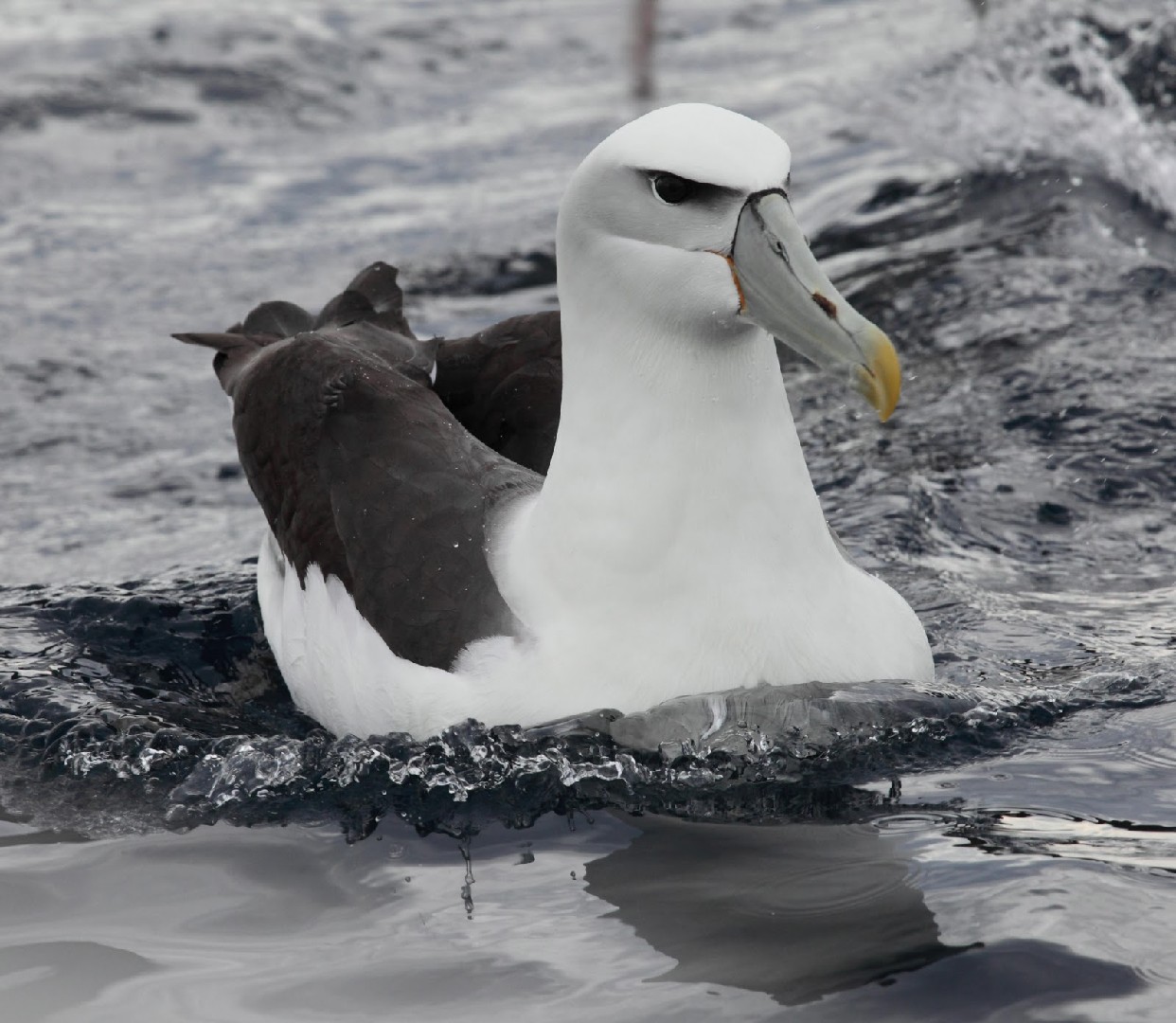Shy Albatross
A species of Mollymawks, Also known as White-capped Mollymawk Scientific name : Thalassarche cauta Genus : Mollymawks
Shy Albatross, A species of Mollymawks
Also known as:
White-capped Mollymawk
Botanical name: Thalassarche cauta
Genus: Mollymawks
Content
Description General Info
 Photo By http://www.comebirdwatching.blogspot.com/ , used under CC-BY-SA-3.0 /Cropped and compressed from original
Photo By http://www.comebirdwatching.blogspot.com/ , used under CC-BY-SA-3.0 /Cropped and compressed from original Description
The shy albatross averages 90 to 99 cm (35–39 in) in length, 220 to 256 cm (87–101 in) wingspan, and 4.1 kg (9.0 lb) in weight. Alongside its similarly sized sister species, the Salvin's albatross, this species is considered the largest of the mollymawks or the small albatrosses. It is a black, white and slate-grey bird with the characteristic black thumb mark at the base of the leading edge of the underwing. Adults have a white forehead and a crown, which is bordered on the bottom with a dark eyebrow and pale grey face. Its mantle, tail and upperwing are grey-black, and the rest is white. Its bill is grey-yellow with a prominent yellow culmen and yellow tip. It has a lifespan of about 60 years. 
Size
89-102 cm (35-40 in)
Life Expectancy
29 years
Nest Placement
Cliff
Feeding Habits
Shy Albatross forages by surface-seizing and occasional pursuit diving up to 5m deep. Diet consists of fish, cephalopods, crustacea, and tunicates, employing both daytime hunting and unique diving strategies.
Habitat
Shy Albatross typically inhabits marine environments and are less pelagic compared to other albatross species. These birds are often found over continental shelves and in coastal waters rather than the open ocean. They breed on offshore islands where they favor slopes or flatter grounds with sparse vegetation, boulders, and in some regions, well-vegetated slopes and sheltered crevices on rock islands. Outside the breeding season, shy Albatross range widely across the southern oceans.
Dite type
Piscivorous
General Info
Feeding Habits
Bird food type
Species Status
The IUCN classifies this species as near threatened, with an occurrence range of 23,900,000 km (9,200,000 sq mi). The population from an estimate in 2007 was 25,500 breeding birds with 5,100 pairs on Albatross Island, 270 pairs on Pedra Branca, and 7,380 on the Mewstone. Historically, they were exploited for their feathers, and by 1909 there were only 300 pairs left on Albatross Island. Today, longline fishing still impacts this species but their numbers have been maintained despite this threat. They also had an avian pox outbreak on Albatross Island that has impacted their numbers slightly. Finally, the Australasian gannet, Morus serrator is the primary threat to their survival. In June 2020, the Australian Government changed the status of the bird under the Environment Protection and Biodiversity Conservation Act 1999 from "Vulnerable" to "Endangered", with the bird facing the main threats from climate change and fisheries (as bycatch victims, either caught in trawling nets, or on hooks in the longline fishing industry), as well as disease and competition with other seabirds. The change in status is not considered to be due to poor management. Listings under state and territory legislation were mostly still "vulnerable" at this time. The bird can only be monitored on Albatross Island, as the other two islands are inaccessible, but there are thought to be 15,000 pairs of shy albatross left. 

 Photo By http://www.comebirdwatching.blogspot.com/ , used under CC-BY-SA-3.0 /Cropped and compressed from original
Photo By http://www.comebirdwatching.blogspot.com/ , used under CC-BY-SA-3.0 /Cropped and compressed from original Scientific Classification
Phylum
Chordates Class
Birds Order
Albatrosses and Petrels Family
Albatrosses Genus
Mollymawks Species
Shy Albatross